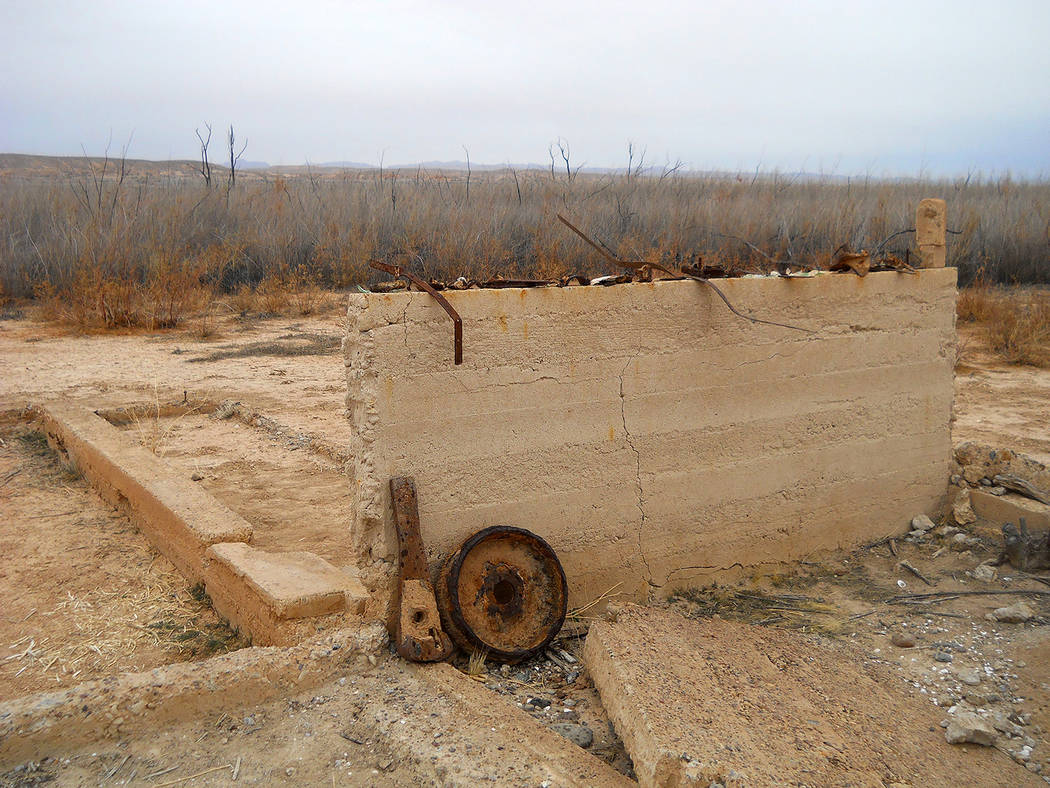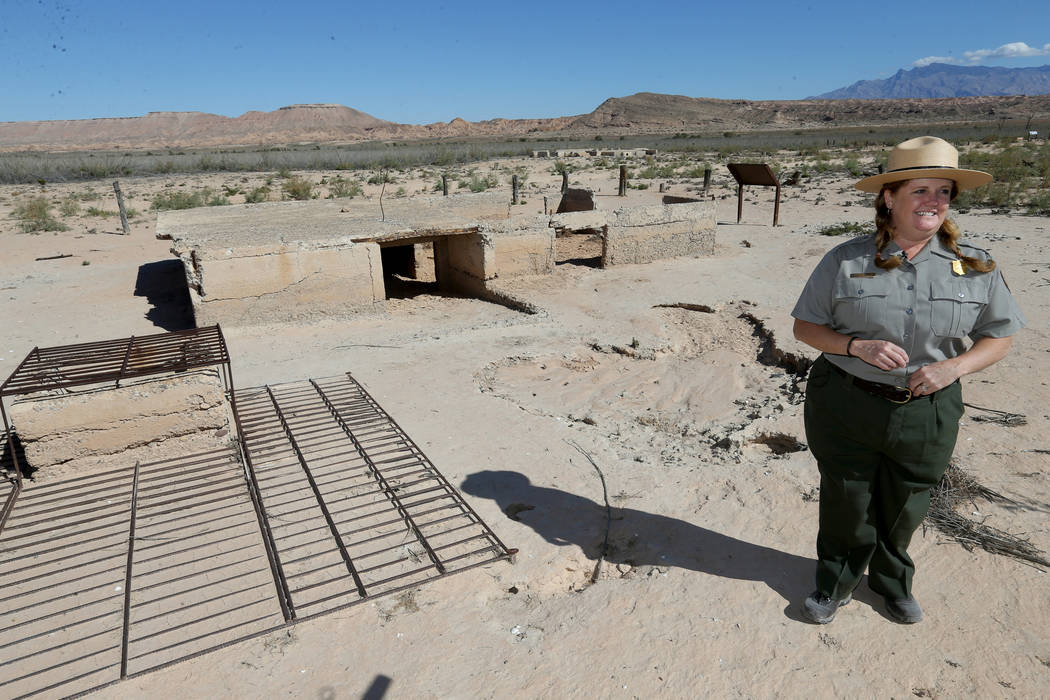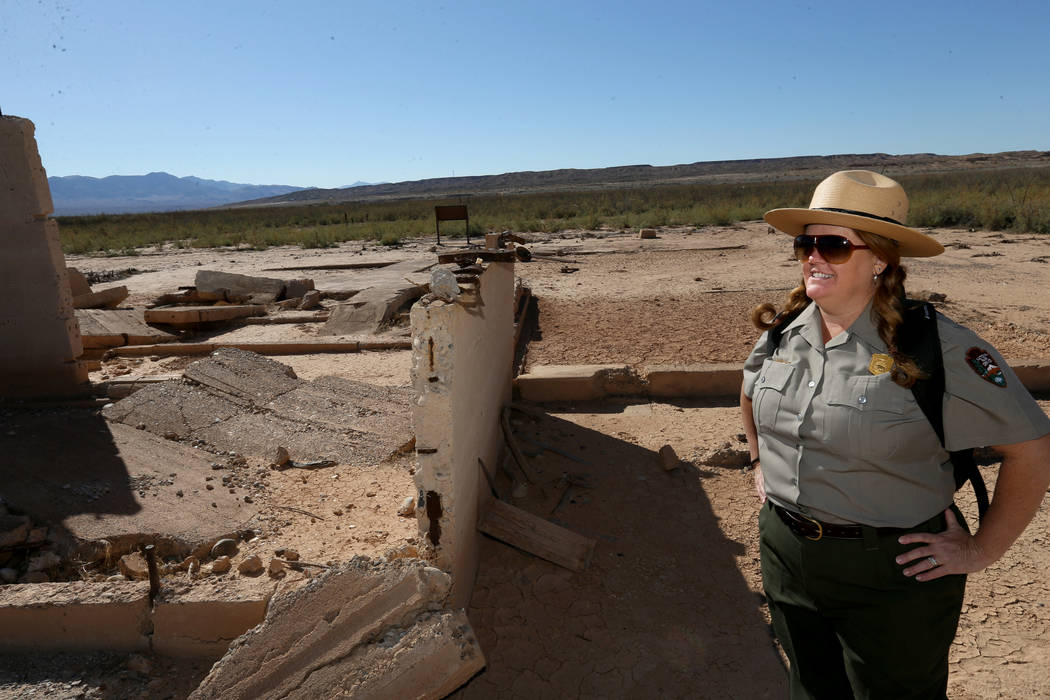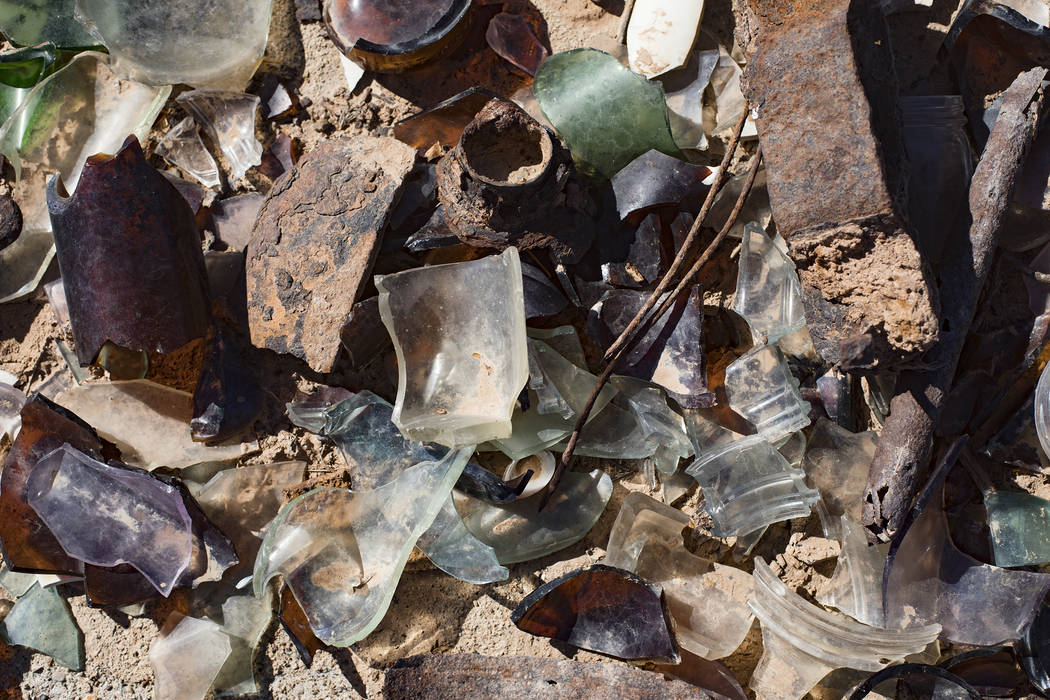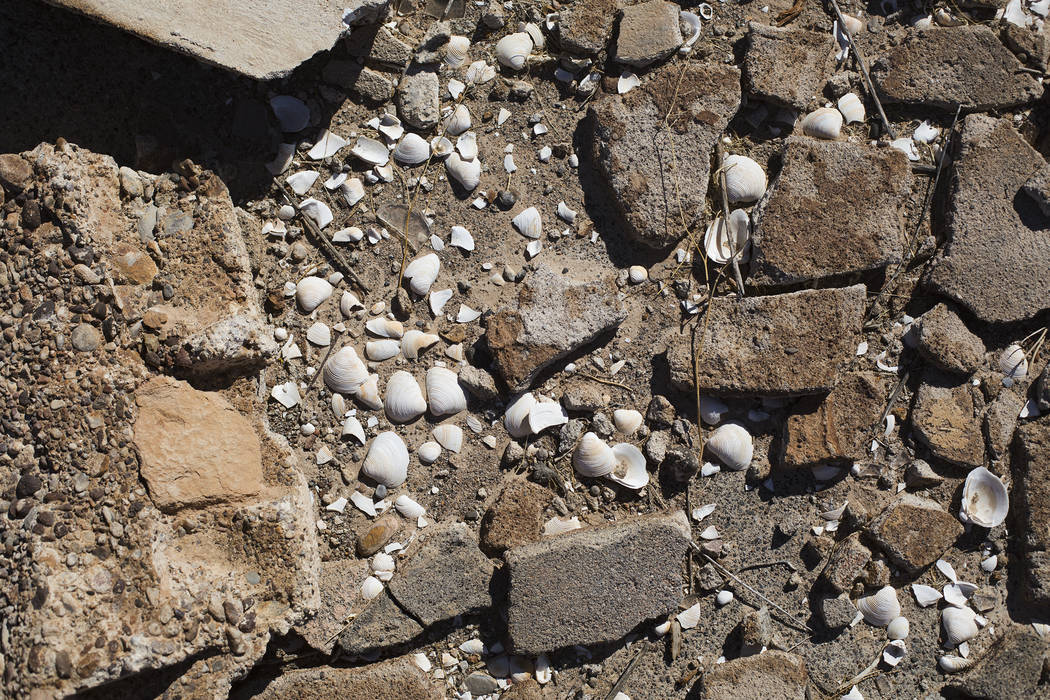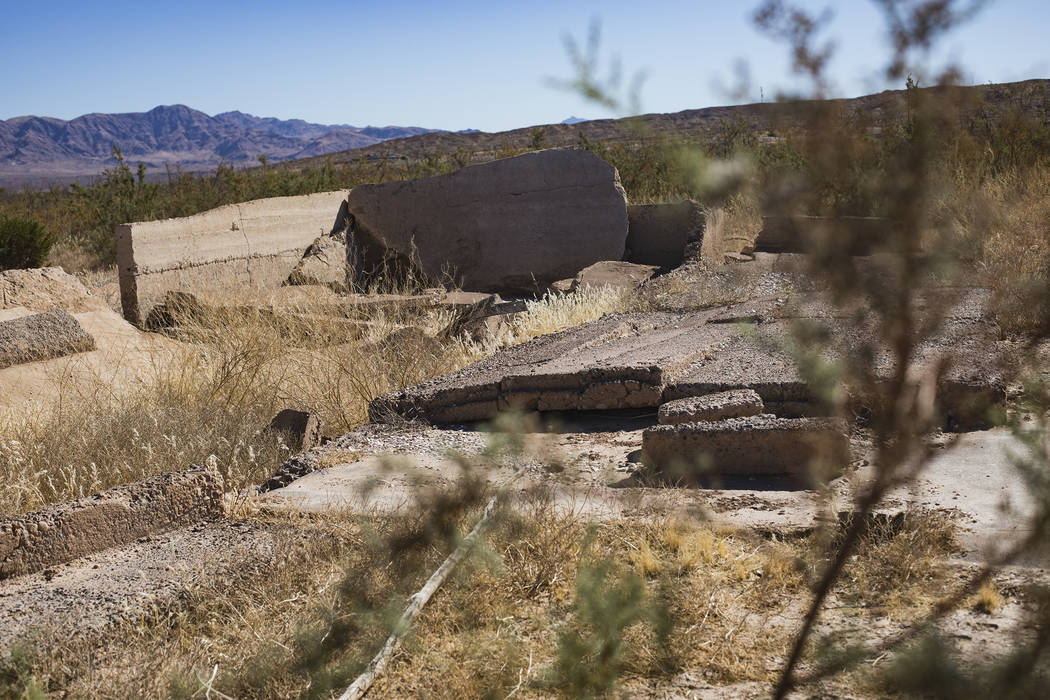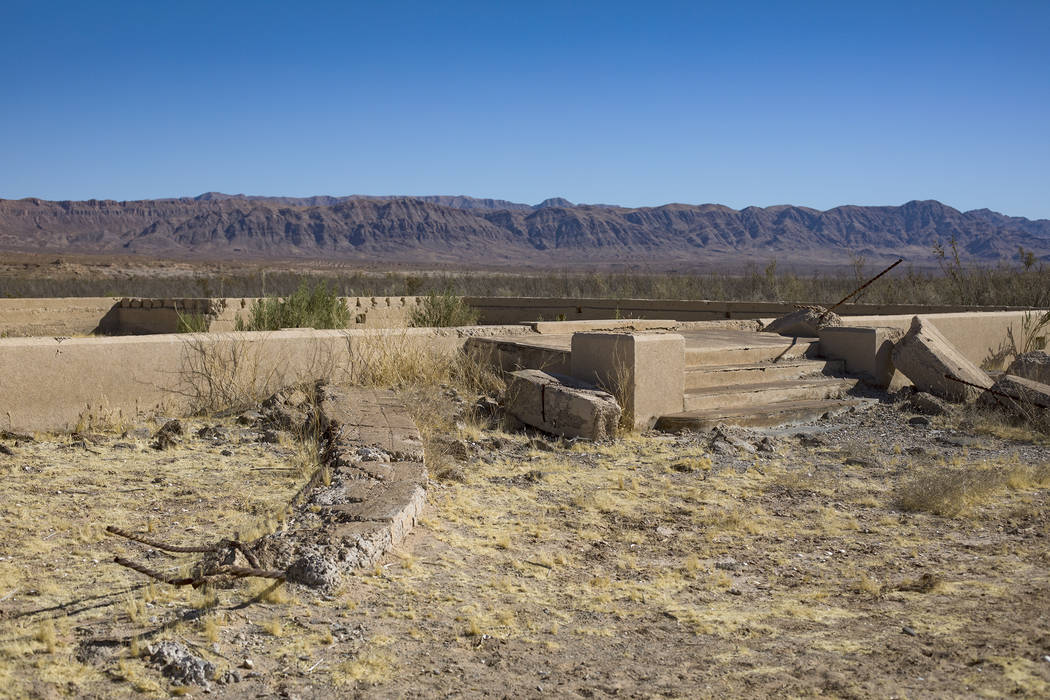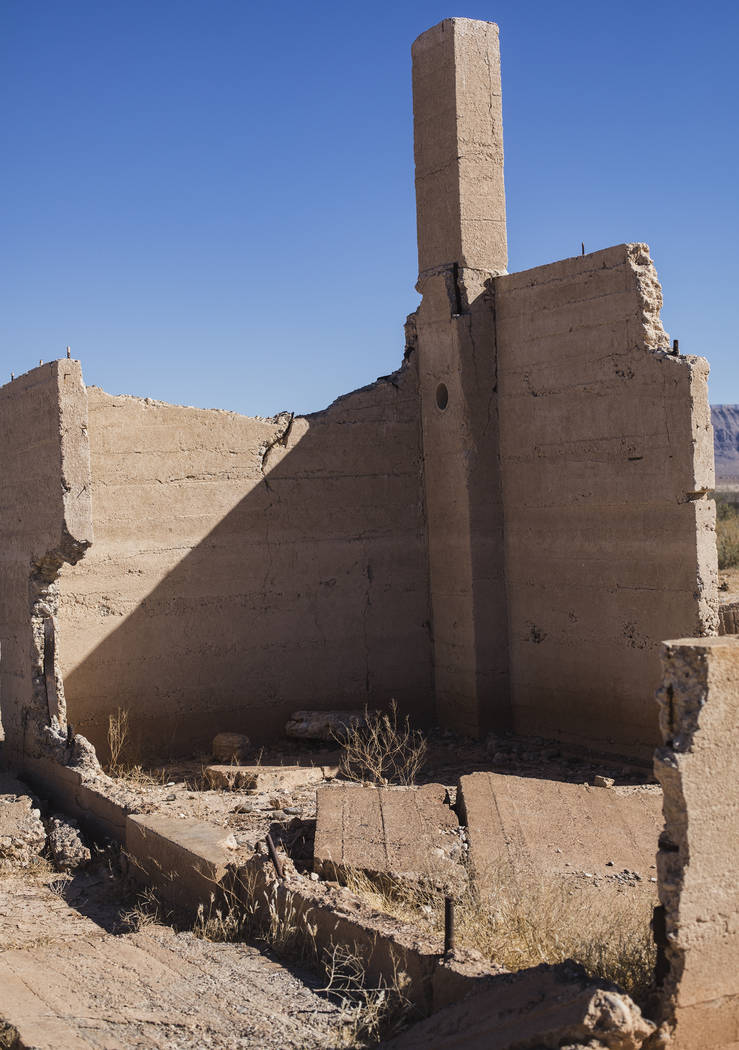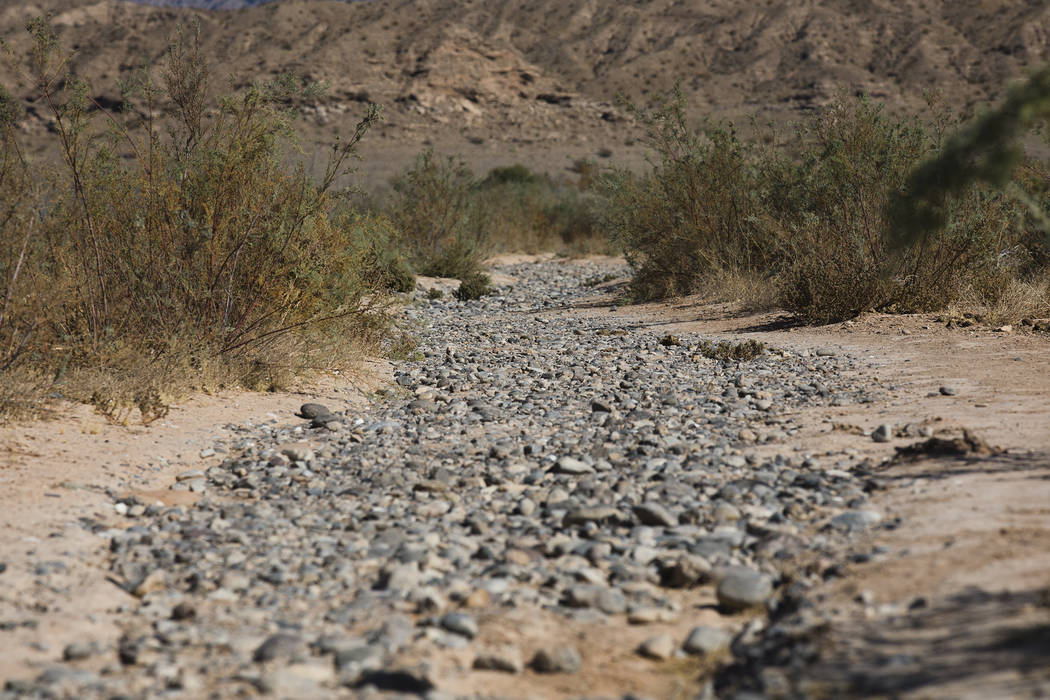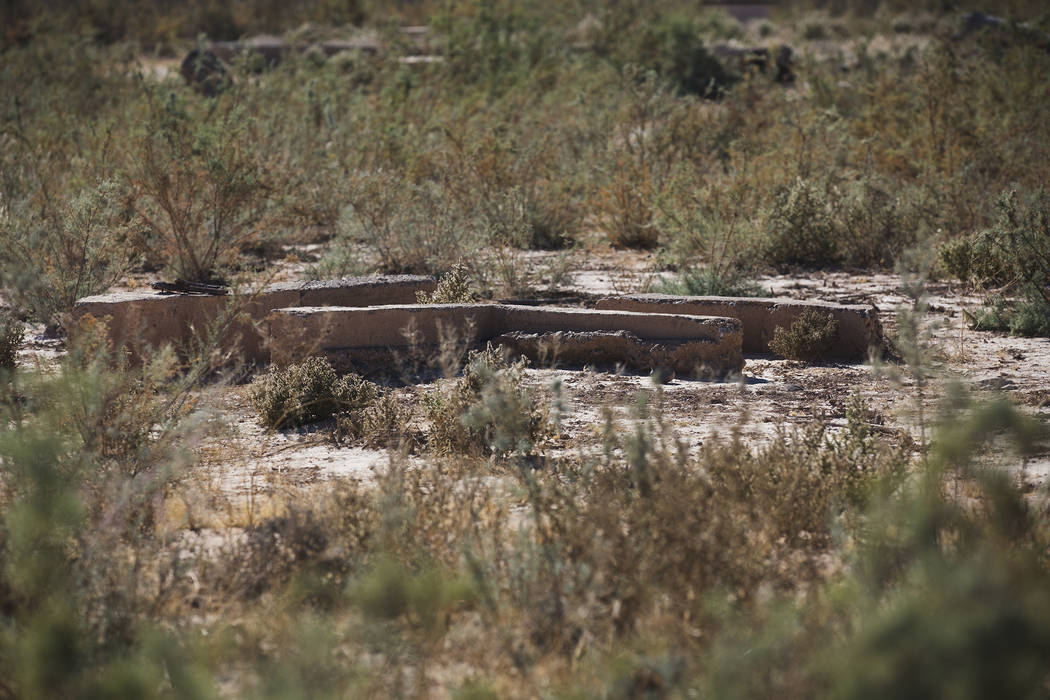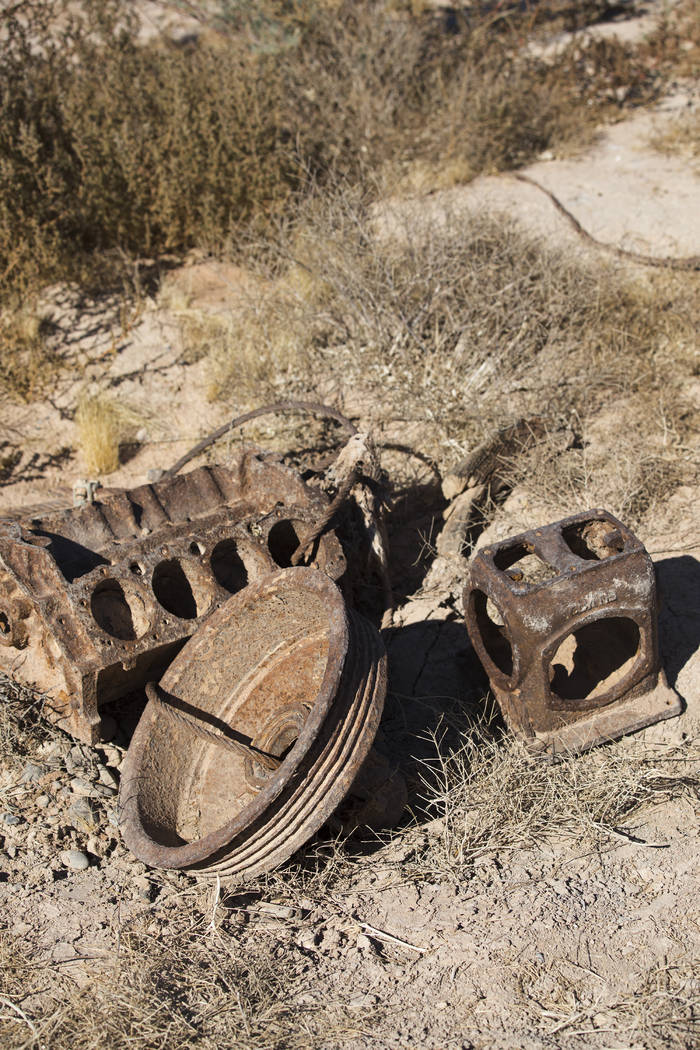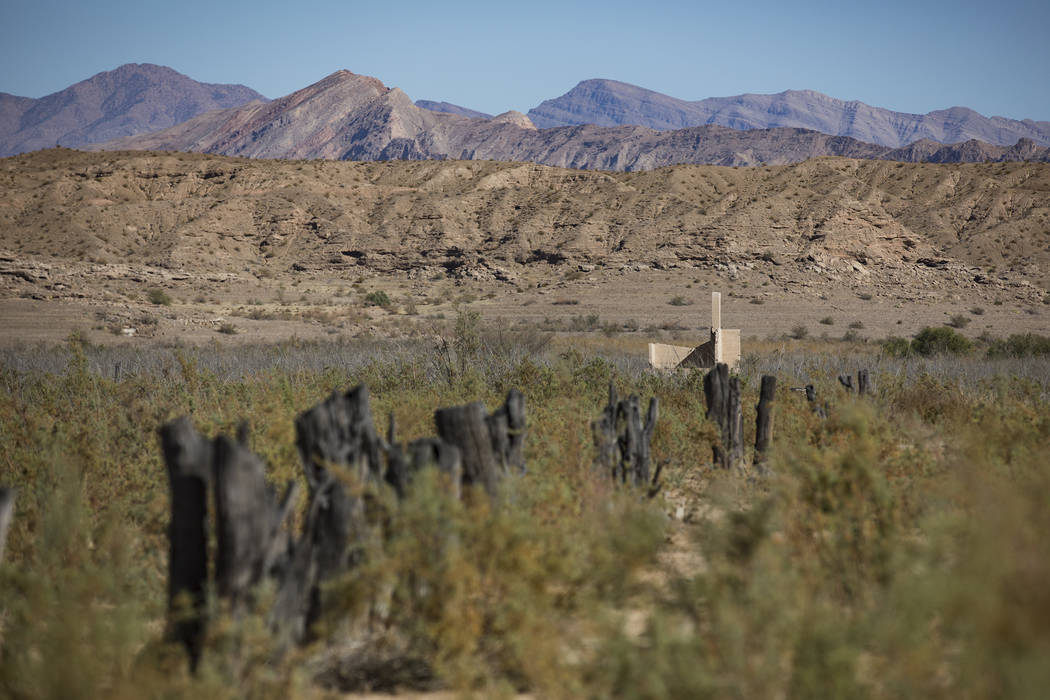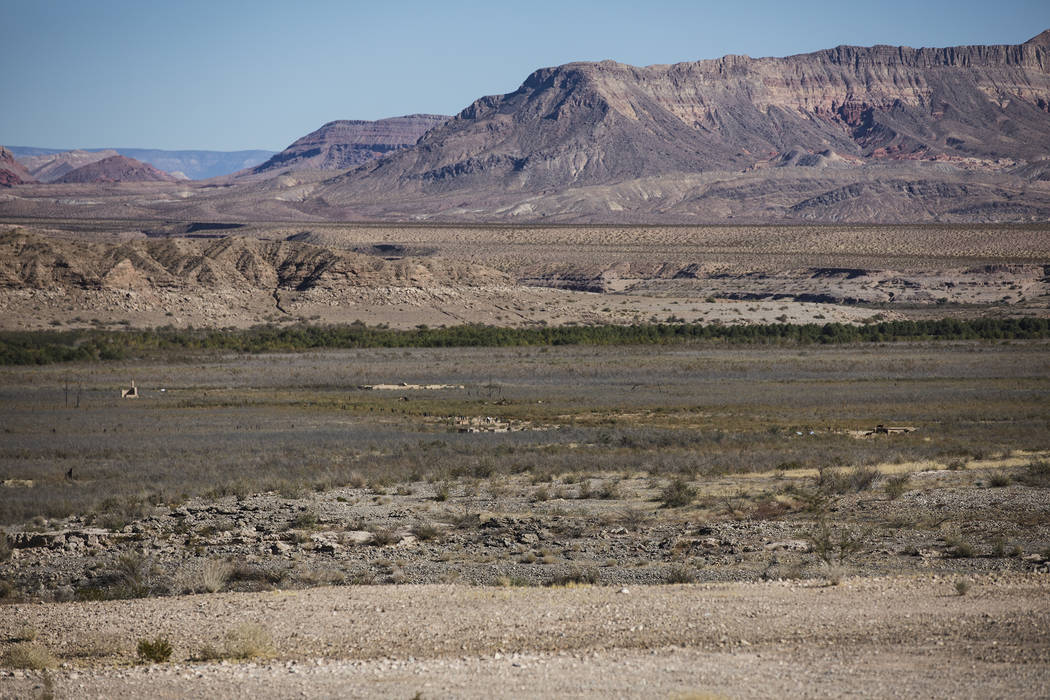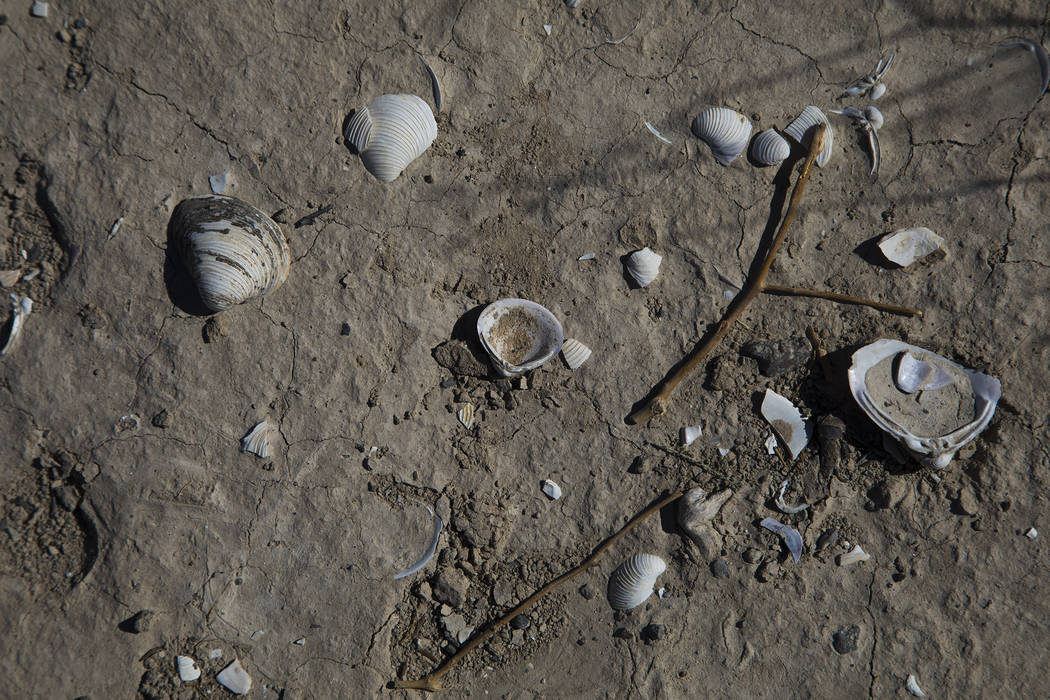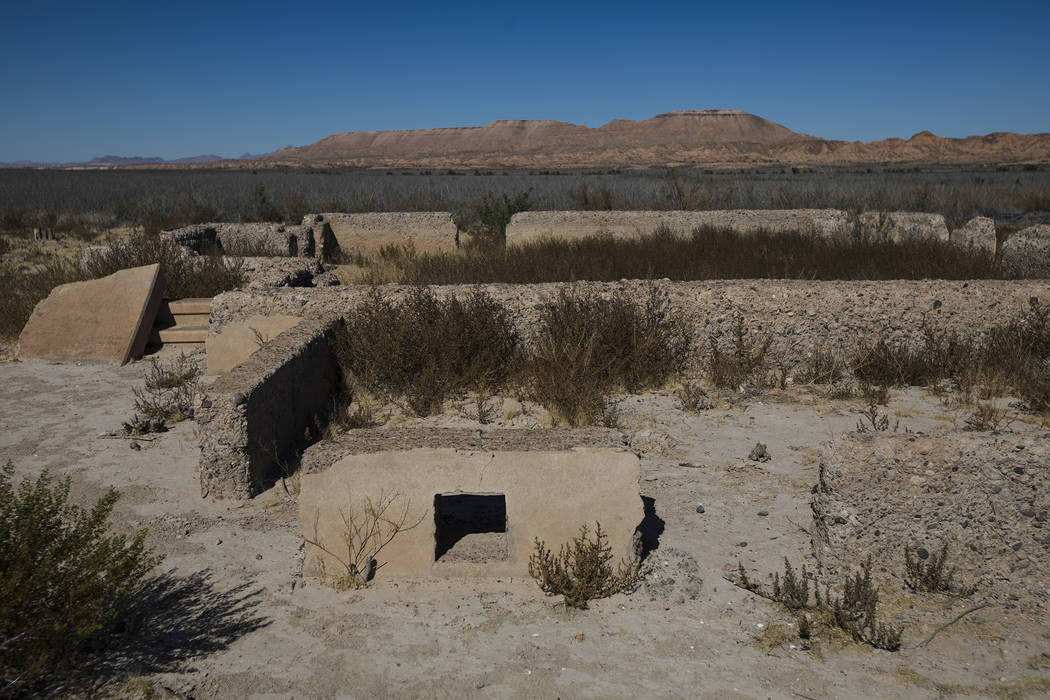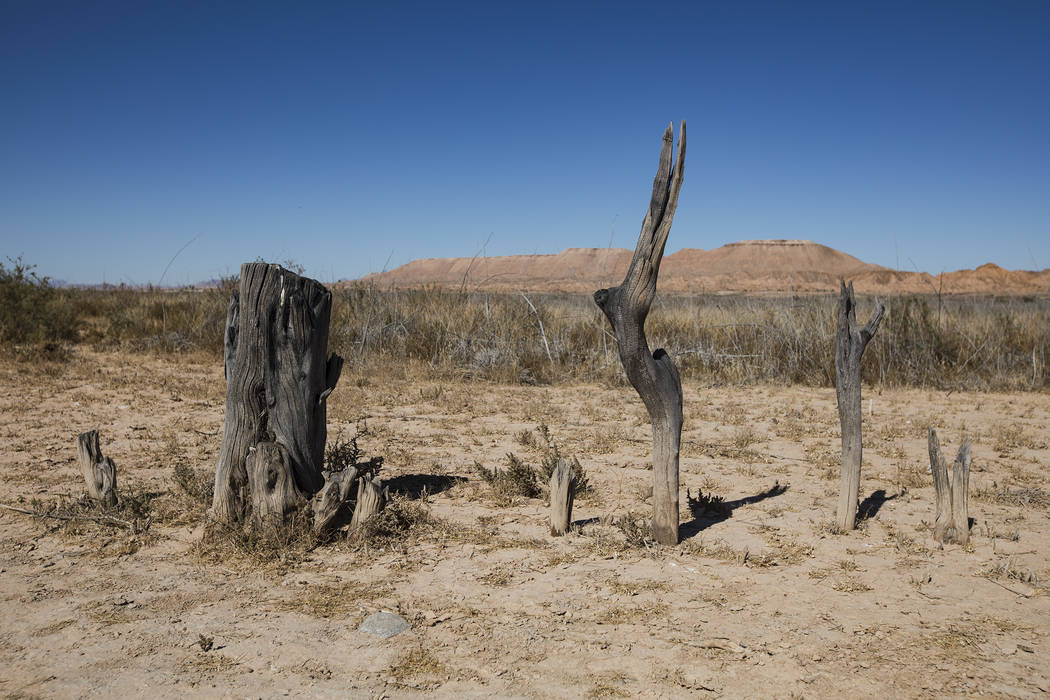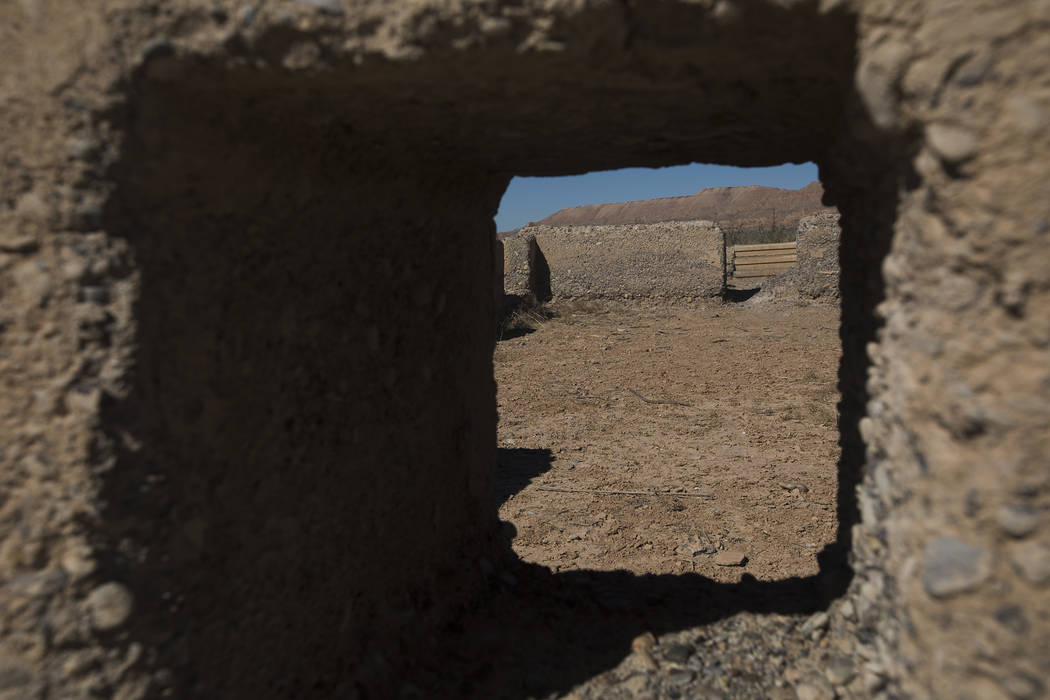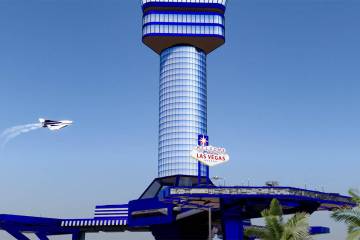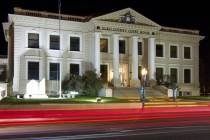The Nevada ghost town that drowned
The watery grave that swallowed whole an entire town 80 years ago has vanished. Where there was once 70 feet of water, there are clear skies and a faint breeze.
What remains of St. Thomas now soaks in the sunshine, about 60 miles northeast of the dam that damned the town.
“St. Thomas, for a long time, you couldn’t get to without scuba diving,” said Michael Green, a UNLV history professor who studies the American West.
Established in 1865 as a Mormon settlement near what is now Overton at the behest of Brigham Young, St. Thomas fell victim to the Boulder (now Hoover) Dam and its formation of Lake Mead.
The town was abandoned, repopulated and abandoned one last time before Lake Mead washed over in 1938 what would become a ghost town unlike any other in the state of Nevada.
Driven out of Nevada
Most ghost towns in Nevada — like Rhyolite, Belmont and Delamar — began as boomtowns, Green said. White settlers sought work mining in Nevada’s mountains and hills, establishing towns in the remote locations from which they mined. As the work dried up, so did the town.
The Mormon settlers who arrived to establish St. Thomas in 1865, however, sought to advance the “Muddy Mission:” the Mormon effort to grow cotton in the desert, convert the native peoples and form stops for “travel and trade on the Colorado River” and along the Old Spanish Trail, according to parks service documents detailing the town’s history.
They settled at the confluence of the Virgin and Muddy rivers in the Muddy Valley, Paiute land that was also the historical home of the Pueblo and the Basketmakers. They had lived there for hundreds of years and left behind the ancient Lost City, which would suffer an aquatic doom similar to that of its new neighbor, St. Thomas.
The new town wouldn’t last long, but it wasn’t disease or heat that drove the settlers away and back to Utah. It was taxes.
Residents thought they were in Utah or Arizona, but a boundary survey completed on Dec. 19, 1870, established that they were, in fact, in Nevada. Rather than pay back several years in taxes to the county, the townspeople voted 63-2 the next day to abandon the settlement.
All but the Bonelli family would leave the town by the end of 1871. But it wouldn’t stay empty for long, according to Aaron McArthur, author of the book “St. Thomas, Nevada: History Uncovered” and an associate history professor at Arkansas Tech University.
Others repopulated the town to take advantage of the ranching and farming opportunities the land had to offer. In the first two decades of the twentieth century, St. Thomas quadrupled in population to 170 people, gained a railroad spur and became an important stop on the Arrowhead Trail highway, according to McArthur’s dissertation on the town.
Had the 1920s ended differently for St. Thomas, McArthur contends, it could’ve survived and grown into a small community like neighboring Moapa, with irrigation ditches and a church in the middle of the town.
The U.S. government had other plans.
Rubble where people once lived
Today, where there was a sea of blue, there is now a sea of sand and brush.
The ghost town is close to Las Vegas and accessible via a short hiking trail east of Valley of Fire State Park and south of Overton. It lies within Lake Mead National Recreation Area land, affording it a concerted preservation effort, whereas other ghost towns in the state aren’t so lucky, Green said.
The parks service maintains the site and allows visitors to learn and interpret its history for themselves, adds McArthur.
Plaques along the trail through the ghost town provide context to the rubble and foundations where people once lived and worked.
In one segment of the trail, visitors can see where the Gentry family led the post office, operated a general store and ran a 14-room hotel once visited by dignitaries and President Calvin Coolidge.
It was Coolidge who signed the Boulder Dam Act of 1928, which sealed the Colorado River in the Black Canyon and the fate of St. Thomas. While the American Southwest would reap the benefits of the monumental public works project, the people of St. Thomas were forced to find new homes.
Some “pulled the Band-Aid off,” took the money and ditched town, McArthur said. They dismantled their homes and moved to other neighboring communities.
Most residents had abandoned ship by 1932. Others were more obstinate and refused to believe that their homes would be drowned.
“When they were negotiating (payments), there were people arguing, ‘What about the values of the trees? You’re taking our homes. What is the value of a home?’” McArthur said.
Few, however, can claim an exit quite like Hugh Lord, one of the very last residents of the forsaken settlement. Lord, who operated a garage in town, woke up the morning of June 11, 1938, to water swirling around his bed, McArthur said. He gathered his things, stepped onto a boat, set his house on fire and paddled away, watching his soon-to-be waterlogged home go up in smoke.
It was just he and the postmaster, who had canceled thousands of letters from people seeking a novelty to commemorate the occasion. He threw his collection of canceled stamps into the water, and the post office was destroyed, McArthur said.
The waters of Lake Mead soon spilled into the streets of the ghost town and spelled the end of St. Thomas.
Submerging and emerging
The town has since emerged and submerged a handful of times with the changing water levels. Old residents or relatives hosted reunions at the site in 1945, 1965 and 2012.
But Lake Mead is nowhere to be found today. St. Thomas resurfaced in 2002, and with sinking water levels throughout the man-made lake, it’s unclear when or if it will submerge again.
Left behind are adobe walls and foundations, cisterns, broken glass and an endless supply of shells caked into the silt and sand.
St. Thomas’ current residents are smaller, if more numerous. Hundreds of grasshoppers buzzed about the brush, while little lizards skittered along the humans’ crumbling handiwork. A few lonely birds called over a light breeze.
They form the soundtrack of the town that drowned, a ghost of the past baking in the desert sun.
Contact Mike Shoro at mshoro@reviewjournal.com or 702-387-5290. Follow @mike_shoro on Twitter.
Related
Explore the ghost town of Grafton, Utah, outside of Zion National Park
Gold Point 'squatters' may get to buy what they thought they owned
Utah ghost town is rich in pioneer history



